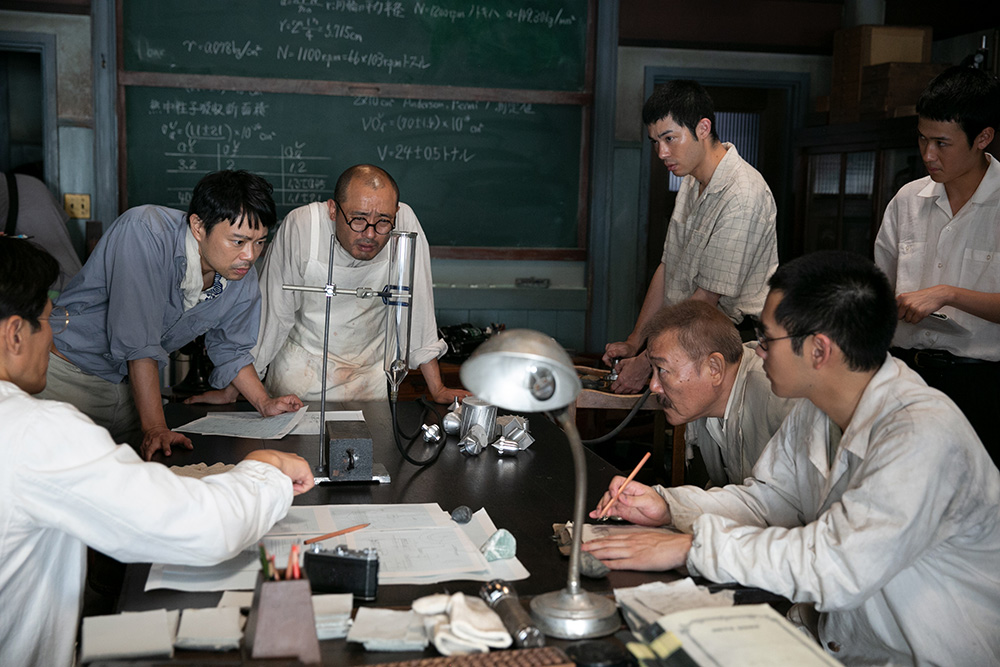![“Children of the Sun” director Hiroshi Kurosaki pursues “the dynamic of life” in a fictional world [Director’s Interview Vol.130]](https://cinemore.jp/images/af1641e06158749c56143a9e039dc25eb22de1d06ad0632575949c84f1c14c46.jpg)
“Children of the Sun” director Hiroshi Kurosaki pursues “the dynamic of life” in a fictional world [Director’s Interview Vol.130]
“Living” skin color created with a colorist
Q: I thought that being able to take pictures with a pull motion was also a great achievement in art. I think it's because it's so spacious and detailed that the range of motion in the acting is so great, and the freedom of acting is so great.
Kurosaki: I think it was seven or eight years ago that I told the production designer, Fumio Ogawa, ``I'd like to do this work.I don't know if it will be possible, but if it comes to fruition, I would love to do it.''
We went on location scouting together, and to be more specific, we were together from the scene hunting (scenario hunting, research to create the script). In terms of the laboratory, they gave great thought to the depth of their thinking and created an accelerator as an experimental device. I thought it was hard to believe that something like that existed at a Japanese university during the war, but the director's careful research and the decoration department's hard work in recreating it made it more convincing. Their technical skills helped us.
At first, I told Mr. Ogawa, ``I don't think it would be good if it wasn't a beautiful movie, since it's a story with a serious theme.'' Because it's a story about how to live each moment of youth to the fullest, there has to be some beauty to it. In that case, ``light'' becomes important when creating a set.
I was always thinking about how to capture light, and even in the laboratory, I focused on how far the light was penetrating when I took photos with "pull" mode. Even though it's wartime, I wanted the place to have a utopian feel where I could just think about science. Mr. Ogawa listened to my story and created it with great calculations.

“Child of the Sun” ©2021 ELEVEN ARTS STUDIOS / “Child of the Sun” Film Partners
Q: This may be related to the way the light is captured, but the way you created the overall skin color was impressive. I felt that my face looked as if I was standing in front of a fire, but when I went to Hiroshima, my face suddenly turned white. It remains vividly in my memory, including its metaphorical meaning.
Kurosaki: I'm really happy that you asked such a maniacal question. The color was created in Los Angeles. The colorist, Aron Peek, is from California, so at first the sky and sea colors were Californian (lol). It's a funny story now, but when I first saw it I almost fell off my chair (lol).
However, as we continued to communicate with him, he quickly figured out how we wanted to take this movie and created a color scheme that I really liked. The first thing we talked about during that exchange was exactly what you just mentioned, ``skin color.'' Since the story takes place during wartime, the kimonos aren't all that flashy, and I was able to create dark images. I don't think there are any other ideas like that, but when we first talked about it, we agreed on the idea of depicting them vividly.
In order to do that, the color of the skin has to convey the feeling of life and blood flowing through it, and just as the city of Kyoto is beautiful now, there must have been a beautiful light shining through it then as well. One by one, we removed the traditional war-like image and added vitality to it.
Showing an attitude of “not taking photos” leads to a unified mindset on site.

